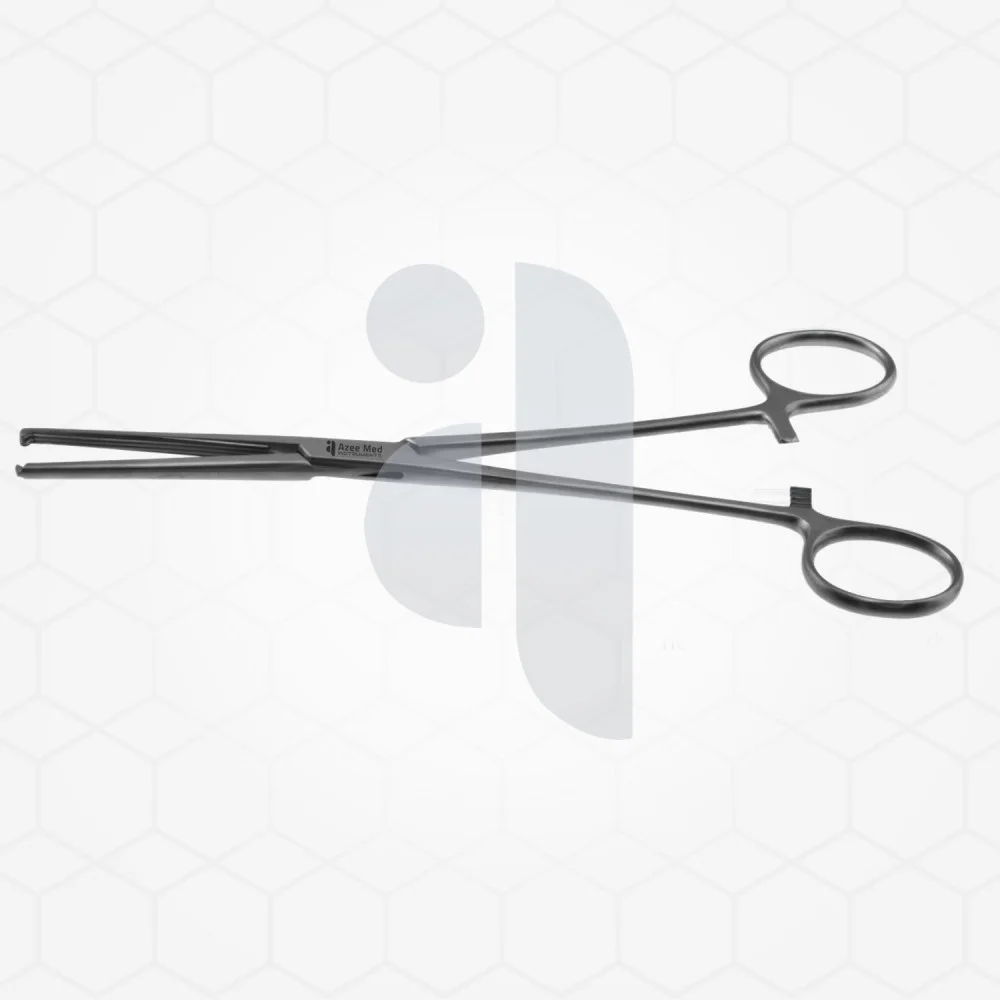The Essential Guide to Bowel Clamps in Surgery
 AzeeMed
AzeeMedSurgical instruments play a critical role in ensuring the success of medical procedures. Among these tools, the bowel clamp holds a unique place in abdominal surgeries and other medical interventions involving the intestines. While many might be unfamiliar with this specialized device, it is indispensable for surgeons who rely on precision and control in the operating room.

What Is a Bowel Clamp?
A bowel clamp is a surgical tool specifically designed to hold and compress sections of the intestine during surgery. Its primary purpose is to temporarily occlude or isolate parts of the bowel without causing damage or excessive trauma to the delicate tissues. Unlike general clamps, bowel clamps have a unique design with atraumatic jaws, often coated or padded, to apply just the right amount of pressure. This ensures that blood flow remains unaffected and prevents unnecessary complications such as tissue necrosis or perforation.
These hemostat clamp come in various styles and sizes to suit specific surgical needs. From Doyen intestinal clamps to Kocher's curved clamps, surgeons have access to a variety of options, each tailored for different types of procedures. Regardless of the specific type, all bowel clamps share a common goal: to create a safe surgical environment while ensuring the patient’s well-being.
Applications of Bowel Clamps in Surgery
Bowel clamps are primarily used during abdominal surgeries, such as bowel resections, laparotomies, and the treatment of intestinal obstructions. During procedures where a segment of the intestine must be removed or repaired, bowel clamps are employed to isolate the area. This prevents spillage of intestinal contents and reduces the risk of contamination to surrounding tissues.
One of the most common scenarios where bowel clamps are essential is in bowel anastomosis. This procedure involves reconnecting two sections of the intestine after a diseased or damaged portion has been removed. By gently but firmly holding the intestinal ends, bowel clamps provide the surgeon with a clear and stable working field. This precision is crucial for creating seamless sutures and ensuring the integrity of the intestinal tract after the procedure.
Additionally, bowel clamps play a role in preventing excessive bleeding during surgeries. By temporarily compressing the bowel segment, surgeons can control local vessels without resorting to more invasive methods. This feature is especially useful in emergency procedures, where time is of the essence.
The Design and Features of Bowel Clamps
What sets bowel clamps apart from other surgical instruments is their highly specialized design. Their jaws are typically long and slender, allowing for easy access to deep abdominal spaces. Many are curved or angled to accommodate the natural contours of the bowel. Unlike hemostats or other gripping tools, bowel clamps are engineered to apply even, gentle pressure that prevents crushing the intestinal walls.
Most bowel clamps are made from stainless steel, ensuring they are durable, easy to sterilize, and resistant to corrosion. Some models also feature removable silicone or plastic coverings on the jaws, enhancing their atraumatic capabilities. The handles of these clamps are ergonomically designed to give surgeons a firm grip, minimizing hand fatigue during lengthy operations.
Despite their simplicity, the precision engineering behind bowel clamps reflects the importance of creating tools that prioritize patient safety. Every detail, from the grip to the tension, is crafted to maximize efficiency while reducing risks.
Why Bowel Clamps Are Indispensable
The importance of bowel clamps cannot be overstated. These instruments contribute to better surgical outcomes by minimizing complications and improving precision. By holding the bowel securely in place, they allow surgeons to focus entirely on the critical task at hand without worrying about inadvertently damaging surrounding tissues.
Additionally, bowel clamps support economies of time and effort during surgery. With their help, complex procedures become smoother and more manageable. This efficiency can translate into shorter operating room times and quicker patient recovery.
Their role extends beyond the operating table. Training new surgeons often involves demonstrating the proper use of bowel clamps, emphasizing their significance in modern medical education. By mastering this tool, future surgeons gain a strong foundation in safe and effective surgical practices.
Final Thoughts
Bowel clamps may not receive as much attention as other surgical instruments, but their importance in abdominal surgeries is undeniable. From stabilizing intestinal sections to preventing contamination and tissue damage, these tools are indispensable in ensuring patient safety and procedural success. Their careful design reflects decades of medical innovation and dedication to improving surgical outcomes.
For anyone in the healthcare field or those curious about the complexities of surgery, understanding the role of bowel clamps provides a glimpse into the meticulous planning and precision required in modern medicine. They are more than just instruments; they are essential partners in saving lives and advancing healthcare.
Subscribe to my newsletter
Read articles from AzeeMed directly inside your inbox. Subscribe to the newsletter, and don't miss out.
Written by

AzeeMed
AzeeMed
Azee Med® is more than a supplier of the highest quality instrumentation. We listen and engage with our clients to develop solutions that are innovative, efficient and economical.